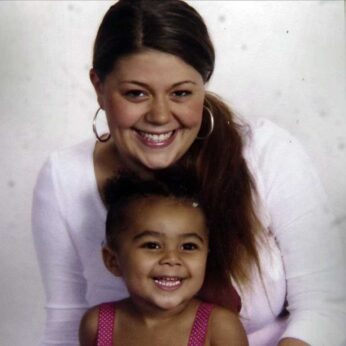
It feels odd to admit that True Crime documentaries have been rather trendy for several years now. There’s something about stories detailing crime, murder, and scandal in the real world that many find hard to resist. And while sensationalist content creators jumped on the craze for social media scrollers, it is often through long-form documentaries that these tragedies have the best chance of being done justice. This allows for less exploitative hyperbole and more layered exploration, but better still, a connection to the broader social influences that shaped the crimes, those who committed them, and the lives of the victims.
Netflix’s Gone Girls: The Long Island Serial Killer does just that. Through the stories of the victims and the voices of the family and loved ones left behind, we are shown how sexism, stigma, and police corruption aided one of the most prolific serial killers of recent history.
Directed by Liz Garbus, Gone Girls is a three-part docuseries detailing the long and controversial investigation into the disappearance of a number of sex workers in the New York City area from the late ’90s to approximately 2011. In 2010, female remains were found in the Gilgo Beach area of Long Island, leading to a string of discoveries of more and more bodies. It quickly became apparent that the zone was a virtual human dumping ground, steps away from some of the busiest and wealthiest beaches of the New York area.
It would take 13 years before a significant break in the case led to the suspected killer’s arrest in 2023. The series details how a system that devalued the victims because of their class and choice of work, along with a tangled web of abuse of power, allowed the suspected killer to remain at large for so many years.
Gone Girls places the victims front and center. Through the testimony of the mothers, sisters, and daughters of the women who disappeared, we’re able to view them as more than just statistics and faceless victims. Garbus makes a point to emphasize who these women were beyond the industry in which they worked to make ends meet. Imploring the audience to acknowledge these women as human beings with desires, dreams, and value while interweaving their stories with that of the troubled Suffolk County Police Department—and its officers’ slow and at times contradictory handling of the case—means the documentary packs a heavier punch than it otherwise might.
Footage of the mothers of the missing speaking to the media, begging the public for information, is juxtaposed with numerous police press conferences during the same time, which seemed more concerned with calming the fears of the broader public than trying to search for the murderer. Police spokesmen are heard branding the victims “high-risk” because they were sex workers, thus assuring “normal” citizens they had nothing to worry about. It was quite clear that in the eyes of investigators, these weren’t the “right” kind of women to worry about avenging. They went against the acceptable role women are supposed to play in society and, therefore, were seen as the cause of their own misfortunes.
Clearly put on the table, then, is the question of whether Suffolk County police were slow to dedicate the proper resources into investigating the murders because of who the women were and the work they did. Testimonies and revelations in the docuseries make it clear that this was indeed the case. Unfortunately, this is not a new phenomenon, as those belonging to marginalized, superexploited, and oppressed communities far too often find themselves criminalized and/or ignored by the very institutions that are supposed to protect and serve.
This also would not be the first time that a serial killer was seemingly given the space to carry out more murders thanks to the failure of the justice system to take seriously the lives of victims from vulnerable communities. Jack the Ripper targeted sex workers and women who lived on the fringes of society. Jeffrey Dahmer predominantly targeted gay men of color during his killing spree in Milwaukee between 1978 and 1991. Gary Ridgway, known as the “Green River Killer,” confessed to targeting sex workers and homeless youth because he believed they were less likely to be reported missing. These are only a few examples of a long list of opportunistic killers who understood that the justice system isn’t equal for everyone.
In the case of sex workers, not only is there a societal stigma, but there is also the criminalization they themselves face. According to the American Civil Liberties Union (ACLU), research shows that the criminalization that sex workers face often affects the frequency of violence on the part of clients, violence by police, and sex workers’ inclination to report assaults to authorities.
This is tragically exemplified in the series when Shannan Gilbert’s story is told. On the last night she was seen alive, despite making a 911 call that would set off the investigation, the woman reportedly feared going to the police about the danger she faced because of her line of work.

Gone Girls isn’t a flashy docuseries. There are occasional re-enactments, but most of the episodes consist of archival footage combined with interviews of the many people involved on various sides of the investigation. It’s an effective way to go about addressing the topic, as the true crime genre often walks a fine line between tasteful and tasteless when it comes to how sensitive issues like these are explored.
Director Garbus shows a great deal of care for the victims, just as she did in another film, Lost Girls: An Unsolved American Mystery, which was a drama based on this very case (filmed before a suspected killer had been found).
There will no doubt be a flurry of emotions as viewers sit through the series, experiencing the harrowing fight for justice by the families, along with the eventual reveal of the suspected killer. Particularly with the acknowledgement that the killer’s descriptors as a white, upper-middle-class family man no doubt helped him evade suspicion thanks to implicit police and societal bias.
It would be easy to oversimplify the stories of most serial killers as cases of evil individuals who somehow evade police thanks to their cunning ways. But in reality, as more films come out exploring these criminal tragedies, we see a pattern emerge: Far too often, more victims could have been saved if their lives were valued to begin with.
Gone Girls wants us to put these stories, which often dominate the headlines, into a deeper social context. It urges viewers to go beyond the intrigue and sensational media coverage that accompany serial murders; it asks us to unpack the assumptions and biases that shape the way these cases unfold and how they are investigated—or not.
Gone Girls: The Long Island Serial Killer is currently streaming on Netflix. The trailer can be found here.










